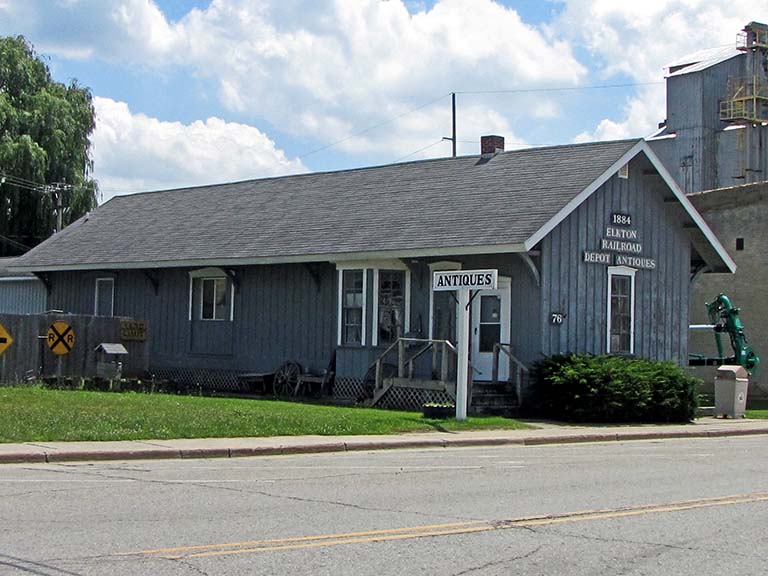

The timber industry gave Michigan’s Thumb its first economic boom. From the late 1850s until the 1870s, many trees were felled in the area and the valuable lumber shipped from local ports on Port Huron and Saginaw Bay. Most of the Thumb’s trees had been cut by the time of the Great Thumb Fire of September 5, 1881. That conflagration not only burned standing trees but consumed the large piles sawdust, cut woods and wooden structures found throughout the Thumb. Two hundred and eight two residents died in this forest fire. I believe this is the largest loss of life attributable to a Michigan fire. As soon as trees were removed, farming began in the Thumb and the land proved to be very productive. After about 1900, the area became one of the nation’s leading sources of sugar because sugar beets thrived here. Before the era of state roads and many trucks, the Thumb’s railroads carried thousands of loads of sugar beets from farms to the major sugar plants that were built in Caro, Farwell and other location. Several of these are still in operation.
In 1881, entrepreneurs in East Saginaw decided that a railroad was needed to connect their city to the increasingly prosperous farming region in the Thumb. I believe that investors in the Flint and Pere Marquette Railroad—a line that extended west from East Saginaw to the city now known as Ludington—also wanted a railroad that would ship the farm products of the Thumb to their line. By 1882 a line has been surveyed from East Saginaw to Bad Axe in the heart of the Thumb. In that same year, this new railroad, the Saginaw, Tuscola and Huron—named for the three counties it would serve, reached the port of Sebewaing. Lacking capital, the investors built a narrow gauge, three-foot wide railroad. This greatly reduced construction costs but made it necessary to shift products from their narrow gauge freight cars to standard gauge rail cars in East Saginaw. Incidently, the state legislature, in 1890, merged the rival cities of Saginaw and East Saginaw to form the city we know today.
The firm ran into financial problems and the line from Sebewaing to Bad Axe was completed slowly. Apparently, the railroad reached the small settlement of Bart, Michigan in 1884 but another two years elapsed before rails were laid through Elkton to reach the end point of Bad Axe. At that point, the Saginaw, Tuscola and Huron connected with the Port Huron and Northwestern, another three foot gauge line that was built north from Port Huron into the Thumb. In May of 1891, the Saginaw, Tuscola and Huron was converted to standard gauge making the interchange of traffic much easier. In 1899, the Flint and Pere Marquette was merged with several other lines to form Michigan’s second most extensive railroad, the Pere Marquette. This line leased the Saginaw, Tuscola and Huron in 1901 and then purchased the company in May of 1903. The Pere Marquette was taken over by the much larger Chesapeake and Ohio Railroad in May of 1925 and then lost its identity when it was merged into that line in April, 1947. In September of 1987, the Chesapeake and Ohio became the CSX Railroad.
By the mid-1980s, large railroads were freeing themselves of the obligation to serve lightly traveled branch lines, particularly those in sparsely populated agricultural areas. The Huron and Eastern Railroad was formed to operate many of the former Pere Marquette/Chesapeake and Ohio lines in the Thumb. In 1988, they purchased what had once beenm the Saginaw, Tuscola and Huron line from East Saginaw to Bad Axe and now provide freight service to this community. That railroad’s headquarters are in the former Vassar Michigan Central depot. They are a component of the Gennesse and Wyoming railroad conglomerate.
The depot you see pictured here was constructed, presumably, shortly after the arrival of the railroad in 1886. I think that it was moved about 100 yards to its present location after the Chesapeake and Ohio sold the line to the Huron and Eastern. In 1911, the Pere Marquette offered two round trips every day from its massive depot in Saginaw to Bad Axe. You could depart from Elkton at 8 AM or 3:45PM for the two hour journey to Saginaw where you could connect to Pere Marquette trains going to Detroit or points west. Return trains departed from Saginaw at 8:15 AM and 4:35 PM. By 1926, passenger services had been reduced to one slow train six days per week departing Saginaw at 7:15 and arriving at Elkton at 12:15 PM. The train went on to Bad Axe where it turned around and went back to Saginaw departing from Elkton at 1:19 PM. By 1931, this was a mixed train and by 1941 the line offered only freight service.
This location was first populated in 1877 and originally known as Oliver Center, named after the first settler. The village of Elkton was established the year the railroad arrived, 1886. The local blacksmith selected the name since an Elk had become ensnared in the lines his wife was using to dry clothes. We can assume that if they had been electric clothes dryers at that time, this town would have a different name. Census 2010 counted 808 residents of Elkton village, a 16 percent drop from the Census 1990 count.
Date of construction:
Architect: Unknown to me
Architectural style: Board and batten style
Use in 2013: Elkton Railroad Depot Antiques
Website for Huron and Eastern Railroad: http://www.gwrr.com/operations/railroads/north_america/huron_eastern_railway
State of Michigan Registry of Historic Sites: Not listed
National Register of Historic Places: Not listed
Photograph: Ren Farley; July, 2013